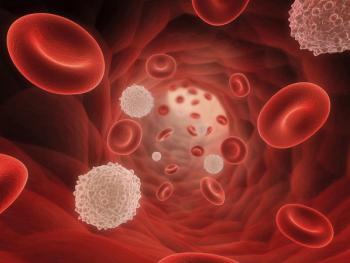
Multidimensional Rehabilitation Appears Feasible/Safe in Blood Cancers

Findings from a randomized trial indicate that therapeutic education plus physical activity are safe, feasible, and potentially effective for patients with hematologic cancer.
A multidimensional rehabilitation program that included therapeutic education and physical activity demonstrated feasibility and safety in the first months following a diagnosis of hematologic cancer, according to results from a randomized study (NCT03403075) published in Supportive Care in Cancer.
For an experimental group of patients receiving 2 educational group sessions on fatigue and physical activity plus 6 weekly sessions centered around an individualized physical exercise program, investigators reported an adherence rate of 90% (95% CI, 84%-94%) of 160 total sessions compared with 68% in a control group of patients who received 44 small group sessions. Additionally, 65% and 64% of patients in the experimental and control groups, respectively, attended at least 80% of the planned sessions.
Three patients withdrew from the study due to worsening clinical conditions, and 2 dropped out due to death. Investigators determined that the reasons for dropping out were not related to the studied interventions. Additionally, there were no adverse effects observed in the study.
“[The study] confirmed the feasibility and safety of the rehabilitation interventions described and suggests that, in the first months after a diagnosis of hematologic cancer, individual sessions can be implemented more easily compared [with] small-group sessions,” the study authors stated.
Investigators of the single-center, open-label, randomized, controlled trial compared therapeutic education alone in a control group with therapeutic education plus physical activity in an experimental group among patients with hematologic malignancies. Follow-ups occurred after 1, 3, and 7 months.
The primary end point of the study was to establish the feasibility of therapeutic education and physical activity intervention in patients with hematologic cancer. Secondary end points included the estimated effect size of therapeutic education and physical activity on clinical outcomes and the degree to which the intervention could affect behavior.
Investigators determined the effect size of therapeutic education plus physical activity based on measured changes in cancer-related fatigue, phycological distress, quality of life, physical performance, and functional exercise capacity via a variety of questionnaires and tests.
Patients 18 years and older who were affected by a first or early relapse of hematologic malignancy and candidates for chemotherapy or radiotherapy were eligible to enroll on the study. Investigators did not include patients with poor prognosis or clinical conditions judged to have interfered with the rehabilitation program.
Of 193 patients who were assessed for eligibility, 46 met inclusion criteria and consented to enroll. Of these patients, 23 were included in the experimental group vs 23 in the control group. The median age in the overall population was 61.76 years (range, 49.83-70.61). Most patients in the control group were female (60.9%) and most in the experimental group were male (65.2%).
According to the study authors, patients in both groups were similar at baseline in terms of the main prognostic values that were measured. At baseline, 84.8% of patients were referred to the Hematology Unit as outpatients and 65.2% had lymphoma.
Between the control and experimental groups, cancer-related fatigue did not differ and there was a clinically relevant improvement detected in the experimental group. Psychological distress mostly decreased in the experimental group, although this was not statistically significant. Additionally, all quality-of-life measures improved for patients across both arms, but there was no statistically significant difference in questionnaire scores between the groups.
Investigators reported a trend towards improvement in mobility, balance, walking ability, and fall risk. Of note, walking ability improved by 71.9 m for those in the experimental group and by 6.4 m in the control group.
Overall, 74% of patients reported feeling satisfied with the level of information they were given. In the experimental and control groups, respectively, 21% and 38% reported that the education was sufficient, and 79% and 63% said it was useful.
At baseline, 47.8% of patients in the control group and 56.5% of those in the experimental group reported having an active lifestyle. With the final follow-up of the study, 42.9% of patients in the control group and 84.2% in the experimental group reported that they continued to exercise regularly (P = .02).
“…The results of this study can be useful to other researchers when designing larger trials that focus on the efficacy of multidimensional rehabilitation approaches to address clinically relevant outcomes of hematologic cancer patients,” the study authors concluded.
Reference
Accogli MA, Denti M, Costi S, Fugazzaro S. Therapeutic education and physical activity are feasible and safe in hematologic cancer patients referred to chemotherapy: results of a randomized controlled trial. Supportive Care in Cancer. 2023;31:61. doi:10.1007/s00520-022-07530-4
Newsletter
Stay up to date on recent advances in the multidisciplinary approach to cancer.

















































































